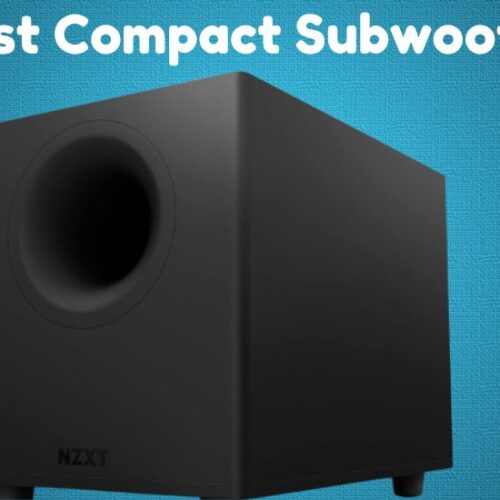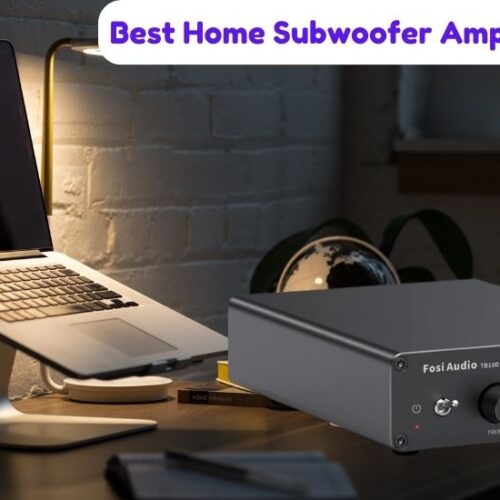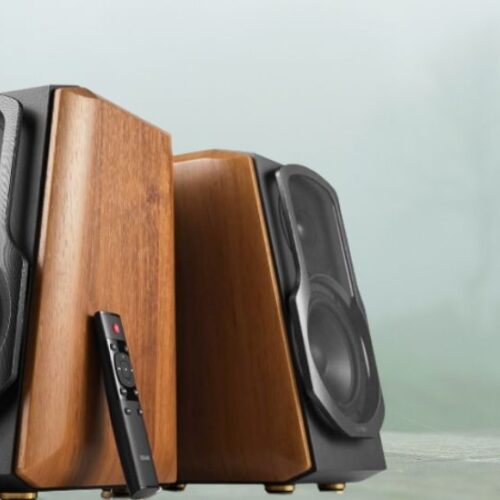Subwoofer sensitivity is a crucial factor in determining the overall performance of a sound system. The sensitivity of a subwoofer refers to how effectively it converts amp power into sound pressure level (SPL). A subwoofer with higher sensitivity can produce louder sounds with less power, making it ideal for those looking to maximize the bass response of their audio system. This article will cover the importance of subwoofer sensitivity and how it affects the overall sound quality. Furthermore, it also covers how it can impact your amp power and speaker specs. We will also discuss the different aspects of subwoofer sensitivity, including voice coil size, resonant frequency, and enclosure type.
Understanding Subwoofer Frequency
What is the frequency response and its importance in subwoofers?
Frequency response is a crucial aspect to consider when selecting a subwoofer. It refers to the range of frequencies that a subwoofer can reproduce. A subwoofer with a wider frequency response can produce deeper bass extension, resulting in a more immersive audio experience. The frequency response is typically measured in hertz (Hz), with lower frequencies representing deeper bass. Subwoofers are designed to handle low frequencies that standard speakers generally do not reproduce without a subwoofer. This makes them essential for enhancing the bass performance in a home theater or car audio system.
What does frequency do on a subwoofer?
A subwoofer’s frequency greatly affects an audio system’s sound quality and performance. Lower frequencies provide a deeper bass that can be felt as much as heard, adding richness and dimension to the audio. Additionally, a subwoofer with high sensitivity and efficiency can produce better sound and loudness without excessive wattage. This makes it important to carefully consider the subwoofer’s specifications, including speaker sensitivity, power handling, and subwoofer efficiency, to achieve the desired audio performance.
Interpreting frequency specs
When looking at subwoofer specifications, it’s important to pay attention to the frequency range and the sensitivity of the subwoofer. The size of the subwoofer can also impact its ability to reproduce lower frequencies. Additionally, understanding the power handling specifications such as RMS power, peak power, and continuous power can help determine how much power input the subwoofer can handle without distortion. This information can guide you in selecting the right subwoofer for your audio system, whether for a home cinema setup or a stereo system.
Impedance in Subwoofers
How does impedance affect a subwoofer’s Performance?
It is crucial to consider when choosing a subwoofer for your audio setup. It refers to the speaker’s resistance to the electrical current coming from the amplifier and is typically measured in ohms. A subwoofer’s impedance impacts its performance in several ways, including its ability to sound better at certain frequencies and its sensitivity to the amp you need to power it. When referring to subwoofers, impedance typically ranges from 2 to 8 ohms.
What’s The relationship between impedance and power output?
Understanding the relationship between impedance and power output is important when setting up your audio system. Lower-impedance subwoofers require more amplifier power to produce the same output power as higher-impedance models. For example, a 2-ohm sub will demand more power from the amplifier than an 8-ohm one. However, higher-impedance models usually offer greater clarity and detail in sound reproduction.
How to choose the right impedance for your setup?
The right impedance for your setup depends on various factors, such as the amp you have available, the box size of the subwoofer, and the desired sensitivity level. Generally, matching the subwoofer’s impedance to the amplifier’s output power is recommended for optimal performance. If you have multiple subs in your setup, ensure their impedances are compatible with each other and with the amplifier you plan to use. In conclusion, impedance plays a significant role in the performance of your subwoofers and the overall sound quality of your audio system. Understanding how impedance affects power output and sound reproduction can help you make informed decisions when choosing the right sub for your setup.
Subwoofer Sensitivity Explained
Is subwoofer sensitivity important?
Yes, subwoofer sensitivity is important. However, Sensitivity in subwoofers refers to how efficiently the speaker can convert electrical energy into sound. It is typically measured in decibels (dB) and is often specified at 1 watt of power and 1 meter away from the speaker. A higher sensitivity rating means the speaker can produce louder sound levels with less power.
How does sensitivity affect the sound output and efficiency of a subwoofer?
Subwoofer sensitivity determines the speaker’s overall efficiency and sound output. A subwoofer with higher sensitivity can produce louder sound levels with less power input than a subwoofer with lower sensitivity. This means that a higher-sensitivity subwoofer can achieve deep bass and rich sound even with a lower-watt amp. Sensitivity also affects how effectively the speaker can reproduce low frequencies and move back and forth to create impactful bass.
How do we compare sensitivity ratings between different subwoofers?
When comparing sensitivity ratings between different subwoofers, it is also important to consider the speaker’s impedance. A lower-impedance subwoofer will require less power to produce the same sound levels as a higher-impedance subwoofer. Additionally, it is crucial to look at the subwoofer’s size box and power handling capabilities, as these factors can also impact sensitivity. By comparing sensitivity ratings, speaker impedance, and other specifications, you can choose a subwoofer capable of reproducing low frequencies efficiently and delivering a better listening experience.
Reading Subwoofer Specifications
When shopping for a subwoofer, it’s important to understand the specifications listed on the product. This will help you decide and choose the right subwoofer for your audio needs. A common spec you will come across is sensitivity, typically measured in decibels (dB). Sensitivity refers to how efficiently the subwoofer converts power into sound, with higher sensitivity ratings indicating a more efficient speaker. Another important spec is the woofer, the driver responsible for producing low-frequency sounds. The woofer’s size and material can significantly impact the overall sound quality of the subwoofer.
Overview of common specs found in subwoofer specifications
One key spec in subwoofer specifications is the frequency response, which indicates the range of frequencies the subwoofer can reproduce. This is important for ensuring that the speaker can handle both low- and high-frequency sounds. Another important spec is the power handling, which indicates how much power the subwoofer can handle before distortion occurs. A higher power handling rating means the subwoofer can handle more powerful amplifiers without compromising sound quality.
How can you interpret and understand the specs to make an informed decision?
When looking at subwoofer specifications, it’s important to consider how the various specs work together to determine their overall performance. For example, a subwoofer with a high sensitivity rating may not necessarily be the best choice if it has a limited frequency response. Similarly, a subwoofer with a high power handling rating may not sound great if the woofer is made of low-quality materials. By understanding how each spec comes into play, you can make a more informed decision when choosing a subwoofer.
Tips for choosing the right subwoofer based on its specs
When selecting a subwoofer, consider factors such as the size of your room, the type of music you listen to, and your budget. If you’re looking for deep bass and powerful sound, choose a subwoofer with a larger woofer and higher power handling. If you listen to a wide range of music genres, look for a subwoofer with a broad frequency response. Ultimately, the best way to choose the right subwoofer is to listen to different models in person and decide which sounds best.
Conclusion
In conclusion, it is important to understand the key points covered in the article. When looking at subwoofers, factors such as sensitivity, frequency, and impedance play a crucial role in achieving optimal performance. For example, a 15-inch subwoofer with an 87 db sensitivity alone may not provide a flat response at bandpass frequencies. Port size and EMF audio can also impact the overall sound quality, especially at higher power levels. Lowering the impedance can result in much electrical energy being utilized by one speaker. Therefore, it is always better to consider factors such as high power handling and sensitivity when choosing a subwoofer brand like Sundown Audio. So, make sure to enable JavaScript on your browser before proceeding for a better experience.
FAQs
Q. What is a good sensitivity for a subwoofer?
The ideal sensitivity for a subwoofer typically ranges between 85dB to 95dB. Higher sensitivity means the subwoofer can produce louder sounds with less power, making it more efficient. However, the optimal sensitivity depends on factors like room size, desired volume levels, and the type of audio system used.
Q. How do you make a subwoofer hit harder?
To enhance a subwoofer’s impact, ensure it’s properly powered, positioned, and tuned. Adjust the crossover frequency to blend seamlessly with your speakers. Experiment with phase settings for better integration. Optimize enclosure size and type for your space. Lastly, consider room acoustics and invest in quality cables for optimal performance.
Q. What is speaker sensitivity db?
Speaker sensitivity, measured in decibels (dB), indicates how efficiently a speaker converts power into sound. It signifies the volume level produced when given a certain amount of power. A higher sensitivity rating means the speaker can produce louder sounds with less power, making it more efficient and suitable for various audio setups.
Q. What size woofer is best?
The best woofer size depends on factors like room size, listening preferences, and audio system capabilities. Generally, larger woofers produce deeper bass, while smaller ones offer tighter bass response. For average-sized rooms, 8 to 12-inch woofers strike a balance between punchy bass and overall speaker size.









